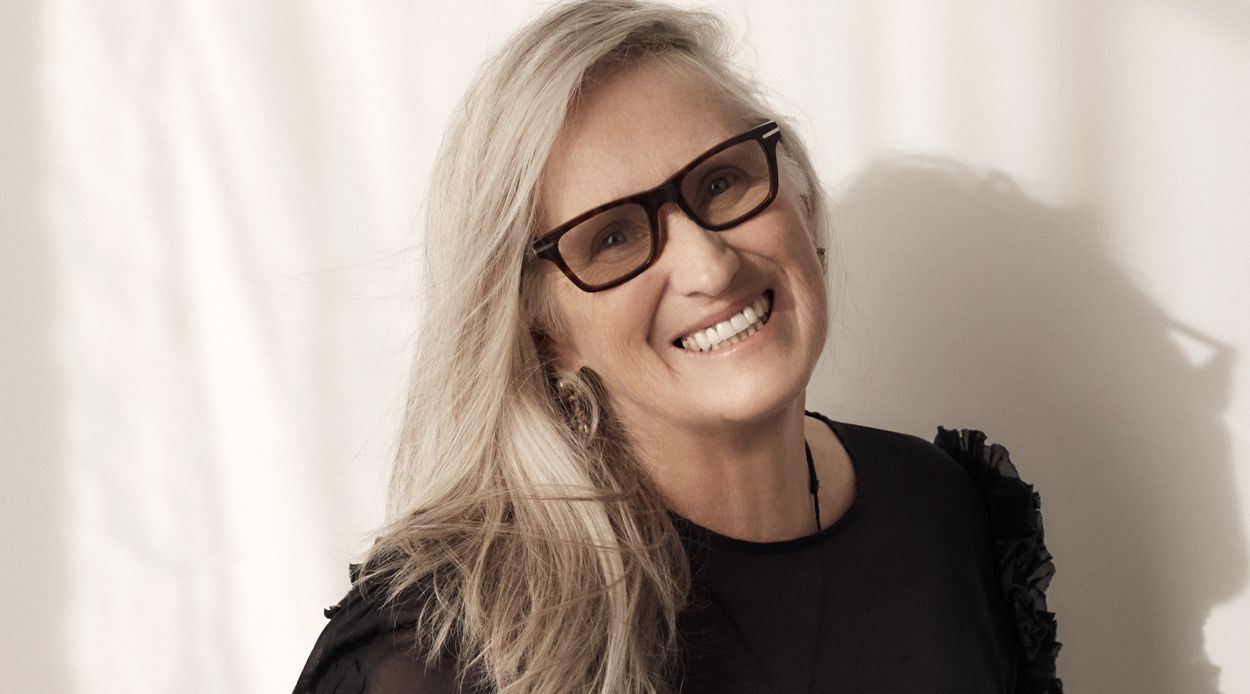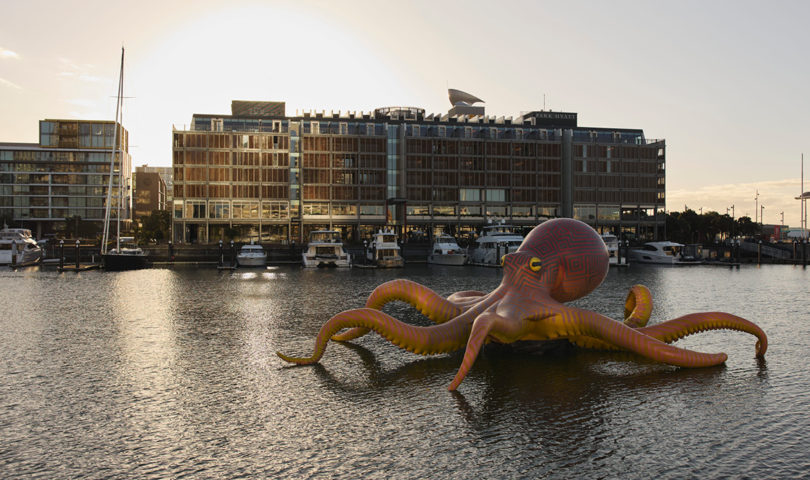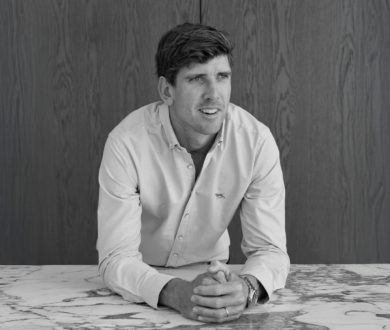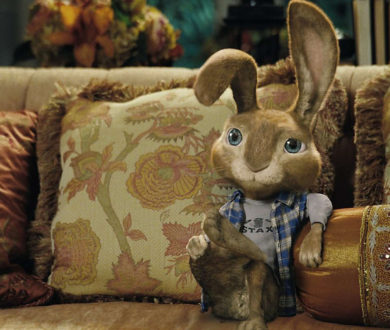Jane Campion is enjoying this moment. After winning the Silver Lion for directing at Venice for The Power of the Dog, her triumphant return to feature films after 13 years, and soaking up the New York Film Festival applause at Alice Tully Hall, the director settles into a soft sofa at Netflix’s after-party at Tavern on the Green. She had taken a detour from moviemaking to create eight episodes of Sundance TV’s lauded series Top of the Lake (2013-2017), which starred Elisabeth Moss and Holly Hunter, back home in New Zealand. Campion smiles as she tells me about the fun she’s having creating marketing materials for The Power of the Dog with Netflix, which won the hardboiled 1920s Western in a bidding war at Cannes 2019, before production began in January 2020 in remote Central Otago, New Zealand.
As with many of Campion’s films, the director seeks out ways to reveal the hidden depths of the human psyche, to pinpoint emotions in subtle and nuanced ways, whether it’s the toxic toll of keeping a secret (The Power of the Dog), exuberant sexuality (Hunter and Harvey Keitel in The Piano), or passionate first love (Abbie Cornish and Ben Whishaw in Bright Star). Even as she basks in recent accolades, it’s hard to recall that Campion has often struggled to find support for indie films like the John Keats romance Bright Star, which failed at the box office but inspired admiration from the likes of Quentin Tarantino and Sam Mendes, or misunderstood Meg Ryan vehicle In the Cut, which is being re-examined for its #MeToo themes. Campion took the television detour partly because moviemaking — at least, the uncompromised bravura sort that Campion favors — had become too damn hard.
Which is why the director, now a robust 67, wasn’t messing around when she committed to The Power of the Dog. Having written and directed seven features over two decades, from Sweetie in 1989 through Bright Star in 2009 — winning the 1993 Palme d’Or for The Piano as well as the Oscar for Original Screenplay and the second-ever directing Oscar nomination for a woman — the auteur made sure she did everything she could to ensure success for her eighth film. On the 3rd of December, it took home Best Director and Best Actor for Benedict Cumberbatch from the New York Film Critics Circle, two wins that could repeat on Oscar night, as well as Best Supporting Actor for Kodi Smit-McPhee. Here’s how she did it.
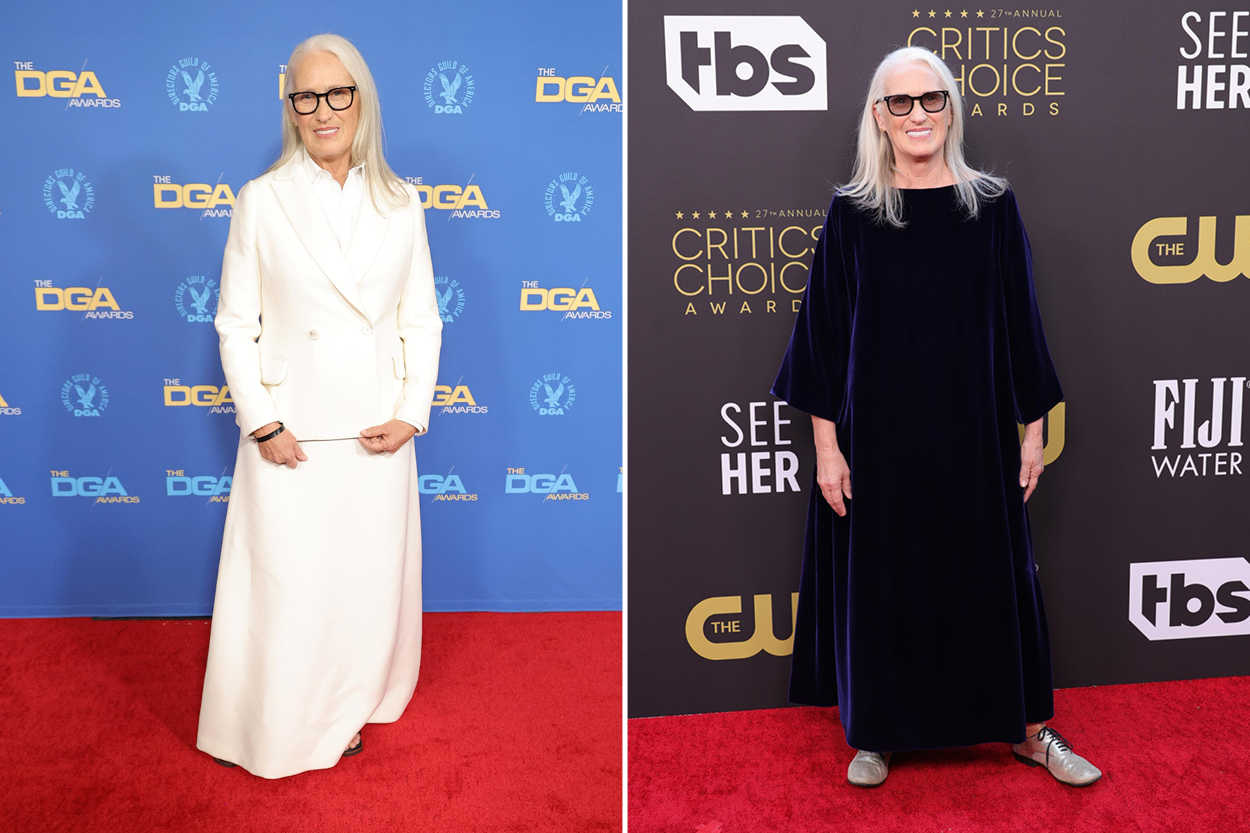
Nail down the right project.
Campion chased down Thomas Savage’s 1967 novel, which producers optioned at least five times but never made. Both Paul Newman and Gerard Depardieu were eager to play Savage’s twisted creation Phil Burbank, who as embodied by Cumberbatch, will be remembered vividly for years to come. Campion managed to convince Canadian producer Roger Frappier, who had already acquired the rights, to go with her instead of someone else. “It’s sort of a post-western, like a ranch story,” she told me in Telluride. “Nobody’s got a gun.”
Find strong producers.
The director brought on Top of the Lake producers Iain Canning and Emile Sherman of See-Saw Films (Oscar-winning The King’s Speech), as well as British producer Tanya Seghatchian (The Crown), who first helped Campion to finance Bright Star in the UK. BBC Films supported initial development as Campion and Seghatchian brainstormed for 10 days in a London hotel, laying post-it notes on a huge French oak kitchen table until they had broken down Savage’s saga into a streamlined structure for a two-hour movie.
“The truth about Jane and her films is that she is, without a doubt, a pioneer,” said Seghatchian on the phone. “She has invariably been ahead in an industry not ready to go to those corners. For the first time, she embraced a male story driven by a male lead. That kind of energy historically she put into finding a space for the unheard female voice. She’s the master of desire and yearning.”
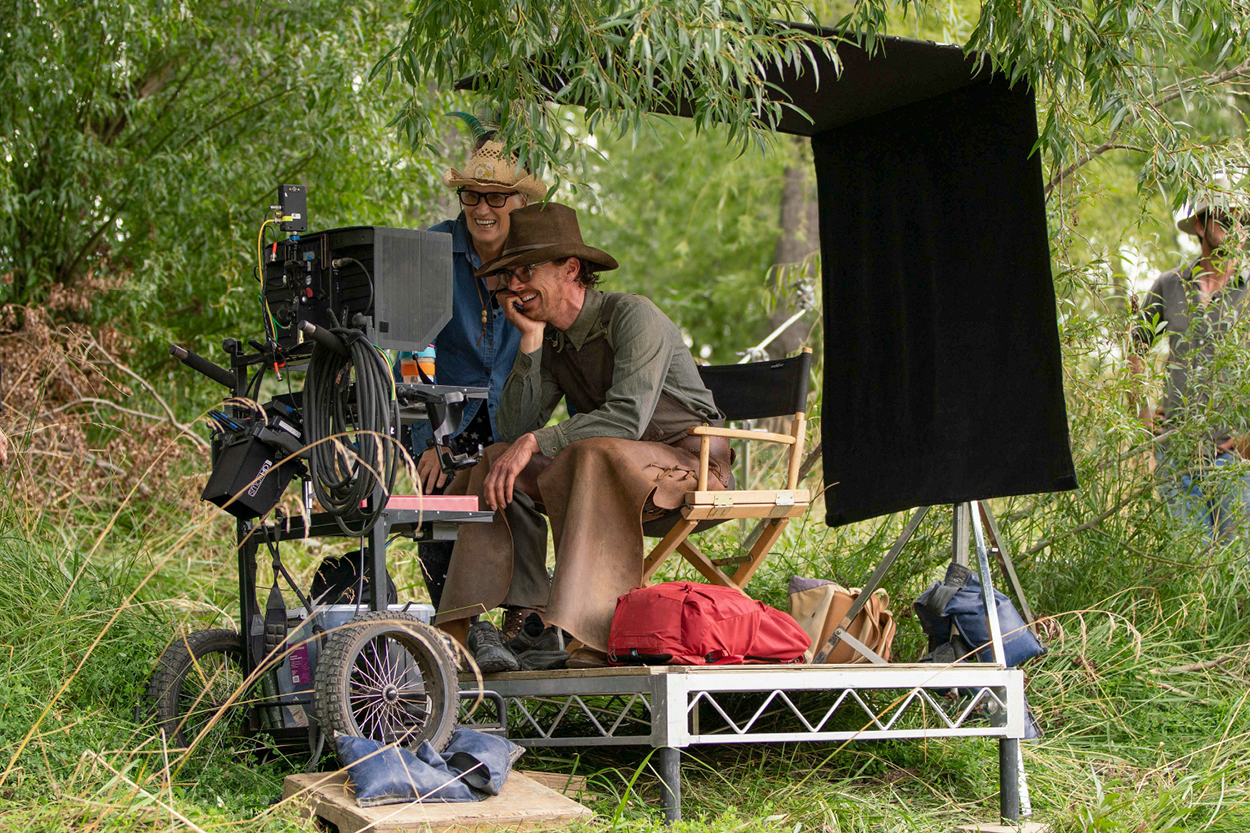
Execute a precise, detailed script.
As she prepped the script, Campion consulted with Brokeback Mountain author Annie Proulx, who wrote the afterword to Savage’s book and confirmed the director’s take on Burbank’s sexuality. “The book is more sly about [Phil’s] gayness,” said Campion. “But because there were all the muscle-man magazines and Bronco Henry, it’s pretty obvious. The decision was when to reveal it. Would we have any images of Bronco Henry? He’s a powerful ghost. One of the rules I made was no flashbacks. We would move chronologically. It gives the audience a sense of security, what they can get to know and what they can’t. Flashbacks too easily explain things. They cause a relationship with reality I just don’t believe in. Things are always more complicated.”
Campion’s screenplay starts at the pivotal moment of change in the relationship between brother Montana ranchers Phil and George Burbank (Cumberbatch and Jesse Plemons), when submissive George defies his brother’s control and marries widow Rose (Kirsten Dunst). “We weren’t needing loads of back story,” said Seghatchian. “We base it on the relationship between four central characters who do figure eights.” Thus the pairings of Phil and George, Peter [Kodi Smit-McPhee], and his mother Rose, Rose and Phil, and Phil and Peter, “unfold like a dance, where the relationships of the four central players weave around one another.”
If Phil reveals his wounds as he reacts to George’s unexpected defection by cruelly undermining Rose (driving her to drink), so is enigmatic Peter tougher than his slim effeminacy might suggest. “It is a David and Goliath story,” said Campion. “Both of them are gay, actually.”
Take the scene when Peter walks in his giant-brimmed cowboy hat past a line of hooting cowboys — and then walks back again. Is he being provocative? “That scene haunted me because it is so brilliant [in the novel],” said Campion. “There was a change. And Phil called him over. It’s more to do with his courage, and his cool about, OK, being called out as a ‘faggot.’ And Phil knows who he is. And the boy’s handling it and he’s walking straight back down, not around or anything else. Phil’s impressed.”
Cast against type.
Campion also committed to telling the story mainly through Phil’s perspective. She needed an actor who could carry the scenes when Phil takes off his grubby cowboy gear and finds solace swimming alone, lying on the grass in his grotto, drawing a soft scarf across his bare chest. “She cast somebody who could be vulnerable in that sacred place,” said Seghatchian, “and open up and allow the memory of Bronco Henry to feel real. She made the decision not to show Bronco Henry on screen. It had to be somebody who could hold that close in their head and allow us to have access. The capacity to love was part of who Phil is. In terms of Benedict’s capacity to act, she knew he could do the technical challenges of being an American cowboy.”
Cumberbatch’s sensitivity in the 2012 BBC drama Parade’s End caught Campion’s attention. “I’m pretty sure a lot of men can do the outer gruff stuff,” she said. “But can they go to the other place? The thing I love about Phil is he’s a lover. He takes risks for it. That he falls in a way for Peter or has love in his heart is one reason why you can handle his character, as he is stretching into something else.”
Campion made some key movie adds: Phil’s shrine to Bronco Henry and scarf, virtuosic banjo and whistle, and constant cigarette puffing. (Cumberbatch succumbed three times to nicotine poisoning.) The actor dug into intense three-week cowboy boot camp, from horse-riding and rope-throwing to castrating bulls, and stayed in character on set, keeping away from Dunst and Smit-McPhee. “Phil is an educated soul,” said producer Iain Canning in an interview. “Masculinity in its toxic form is his prison. It’s the complicated legacy of the masquerade of what masculinity is meant to be.”
And Cumberbatch submitted to wearing cowboy jumpers, chaps, and cowboy woolies. “Sexy,” said Campion. “It’s about his presentation of himself as a man and the exhaustion of that. Because it’s difficult for men, especially if you have a secret. The secret is that he loves men. Or in particular, Bronco Henry. We’re dangling the charismatic aggressive masculine identity and deconstructing that.”

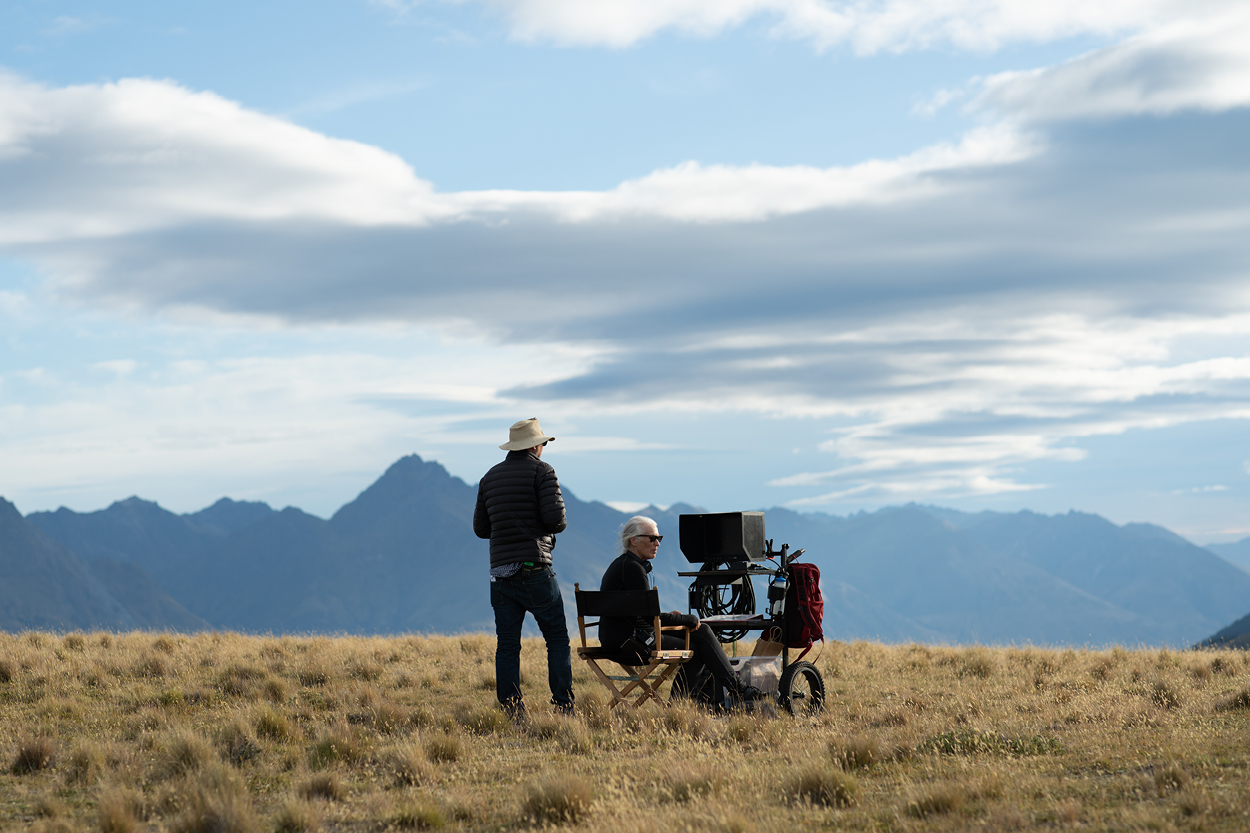
Fight for time.
The producers knew Campion was making an expensive movie because she demanded enough time to execute well. Shooting in Montana would have been much more costly. When Campion spotted the shape of a dog in the Home Hills in Central Otago, “she knew that would be able to be the home for her and the movie,” said producer Emile Sherman.
It had a “mythic, epic feeling about it,” she said. The director insisted on leaving some wriggle room for weather and mistakes, even losing Elisabeth Moss to another start date because it wasn’t worth sacrificing her own schedule. “It’s really important to her that she never feels like she’s rushing through a show,” said Sherman. “She wants to feel like she has the time to get the performances. She’s an immersive director, she likes to bring the cast and crew into the experience of the characters and the time, to sit within the landscape.” Campion even had Dunst and Thomasin McKenzie scrub the floors with period brushes.
Cinematographer Ari Wegner (Lady Macbeth), who had shot a commercial with Campion, came on for a year ahead of the movie, willing to give up other gigs to devote herself to prepping for Campion’s demanding shoot. The two women storyboarded the movie, figuring out every lens to capture both the breadth of the landscape and character intimacy.
The final movie came in — with Netflix absorbing the extra costs of COVID safety protocols when they returned to production after lockdown, between $USD35-39 million.

Listen to her collaborators.
Surrounding herself with smart voices is the Campion way. “She’s very generous in the creative space,” said Seghatchian. “She’s strong enough to know what she wants and able to allow another voice to prod, question, engage, offer opinions and not be distracted by it, use the dialogue in a creative and open way, and make it fun and creative.”
Cumberbatch was able to engage in spirited give-and-take with Campion. “She’s an exceptional human being and an extraordinary talent because she also has a vulnerability,” he said at Telluride, “which is human, and as an artist, which leaves her open to collaborate. And she takes you to places that you can only dream of. And to go on this dark psychological journey playing Phil was just a lifetime’s highlight.”
Even though Campion meticulously planned the shooting script, bleak New Zealand locations, and complex camera moves, the director was open to changes on set. “She sees it 360 as writer and director and responds to the moments, choices, and compromises,” said Seghatchian. “She’s not dogmatic or instructive. Jane and the crew made the space real, which meant creating everything from scratch.”
Campion wooed back her An Angel at My Table production designer Grant Major (Oscar-winner for The Lord of the Rings: The Return of the King), who took on the Herculean task of building, in just a few months, the elaborate two-story Burbank ranch house, barn and stockyards on the vast wind-swept, snowy plain in time for the start of the January shoot when the grasses would burn gold. At one point, 130 carpenters were hammering away. (Detailed soundstage interiors came later, seamlessly united with exteriors via Jay Hawkins’ VFX.) “It was one of the coolest sets I’ve ever seen in my life,” said Dunst. “The house was rich with real wood, and everyone was constantly painting it.”
When Major asked where the title came from, Campion dug into Psalm 22:20: “Deliver my soul from the sword; my darling from the power of the dog.” It’s about Jesus on the cross when he’s dying. “The atmosphere is full of guts and anguish, and blood and suffering,” she said. “And in a way, sexuality is like human suffering. As the title stands, it’s a kind of warning. The power of the dog is all those deep uncontrollable urges that come and destroy us, you know?”
Jonny Greenwood was always on Campion’s mind. She got to know him while he was a composer in residence in Australia and brought him on early to send her ideas. She encouraged him to go with his instincts on using the lonely aching rough sounds of plucked strings and an atonally tuned mechanical piano.
Even during the editing process, as notes came in from Netflix about clarifying key plot points, Campion would consider them and within a few days get back with fixes and workarounds. But she stuck to her guns on the ending. Even though she filmed a clear explanation of the shocking denouement, which comes as a surprise to most viewers who then try to retrace the steps laid out in the film, Campion decided not to use it. “We didn’t need it,” she said. “The audience felt the rules. They go with you. It’s a slow burn.”

